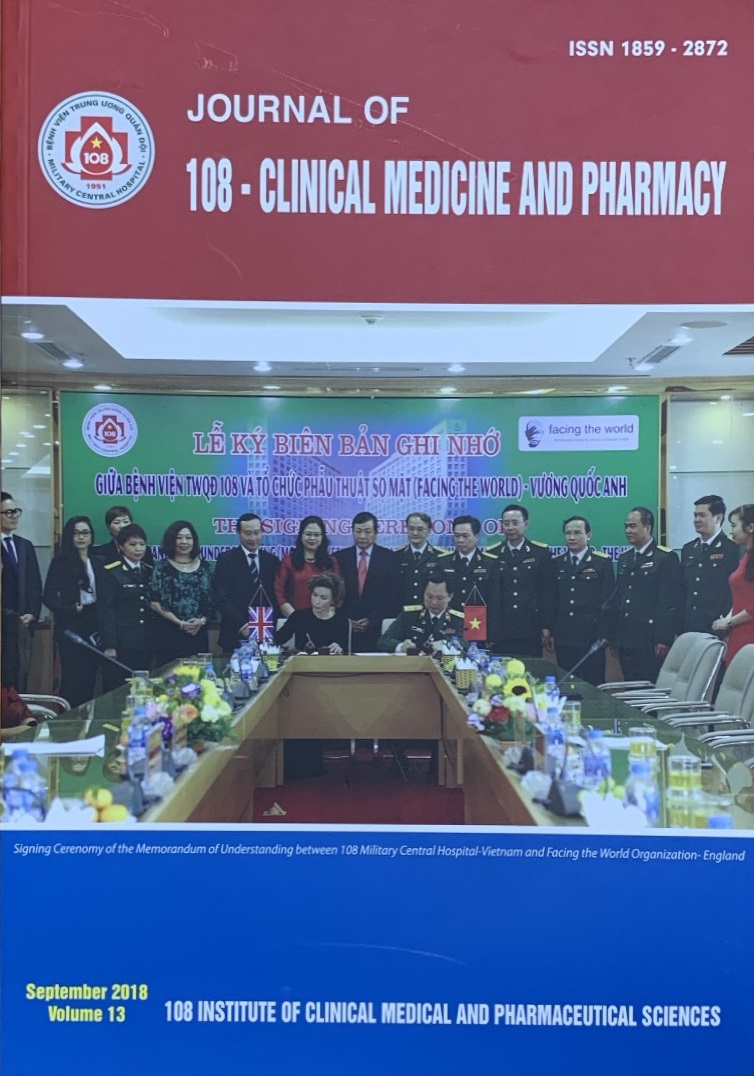Orbital exenteration: A retrospective study over six years in Vietnam
Main Article Content
Abstract
Objective: Orbital exenteration aims to achieve local control of the severe orbital diseases when other treatments are failed. Through this study, the aims of author is to analyse their experience of orbital exenteration, including histopathology, indications, treatment, outcomes, and complications. Subject and method: The information was collected in this retrospective study in order to detect all patients who underwent orbital exenteration between 1 January 2010 and 01 January 2016 inclusive, at the Vietnam National Institute of Ophthalmology. Result: 45 cases with orbital exenteration were identified. The mean age of the patients (male: 21, female: 24) was 48.9 years. There were eight different tumours were found, of which retinoblastoma (9), melanoma (9), sebaceous gland carcinoma (SGC) (8), basal cell carcinoma (BCC) (6), and squamous cell (SCC) carcinoma (5) were the most common. BCC, SCC and SGC, accounted for 15 in 18 cases with orbital invasion from skin cancer, having previously failed tumour resection. The most common complication was numbness (19). Chronic socket discharge with the absence of a fistula was the second one. 21/23 of orbit was healed by spontaneous granulation and epithelialisation. Conclusion: Retinoblastoma and skin cancer were the most common tumour. A large rate of these orbital exenterations performed previous failed local tumour excision. Orbital reconstruction by spontaneous granulation and epithelialisation allows the detection of recurrent tumour at early-stage. Numbness was considered to be the most common complication of orbital exenteration.
Keywords: Clinical characteristics, orbital exenteration, orbital lesion.
Article Details
References
2. Kacioglu ZA (2015) Orbital tumours diagnosis and treatment. Springer: 422-440.
3. Maheshwari R (2010) Review of orbital exenteration from an eye care centre in Western India. Orbit 29(1): 35-38.
4. Muqit MM, Roberts F, Lee WR et al (2004) Improved survival rates in sebaceous carcinoma of the eyelid. Eye (Lond) 18(1): 49-53.
5. Nassab RS, Thomas SS, Murray D (2007) Orbital exenteration for advanced periorbital skin cancers: 20 years experience. J Plast Reconstr Aesthet Surg 60(10): 1103-1109.
6. Nemet AY, Martin P, Benger R et al (2007) Orbital exenteration: A 15-year study of 38 cases. Ophthal Plast Reconstr Surg 23(6): 468-472.
7. Rahman I, Cook AE, Leatherbarrow B (2005) Orbital exenteration: A 13 year Manchester experience. Br J Ophthalmol 89(10): 1335-1340.
8. Rathbun JE, Beard C, Quickert MH (1971) Evaluation of 48 cases of orbital exenteration. Am J Ophthalmol 72(1): 191-199.
9. Bartisch G (1583) Ophthalmodoulcia. Dresden 3(208).
 ISSN: 1859 - 2872
ISSN: 1859 - 2872
